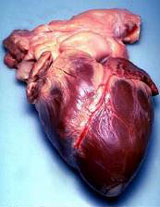New research demonstrates that acupuncture treats premature heartbeats. A type of heart arrhythmia, a premature heartbeat is a contraction of the heart that occurs earlier than expected. This event interrupts the normal rhythm of the heart and causes the following heartbeat to be more forceful. Acupuncture applied to acupoints on the mid-back, arm and head demonstrated successful reduction of premature heartbeats in electrocardiogram studies.
 Acupuncture Benefits the HeartPremature heartbeats can occur in both the upper and lower chambers of the heart. Premature heartbeats in the upper chambers are termed premature atrial contractions and those in the lower chambers are termed premature ventricular contractions. Premature heartbeats occur both naturally and pathologically. A premature heartbeat may be a reaction to stimulants such as caffeine and nicotine. Premature heartbeats may also be precipitated by stress, insomnia, exhaustion and excessive exercise. Pathological conditions giving rise to premature heartbeats include coronary heart disease and cardiomyopathy. In the study, the researchers conclude that specific acupuncture points traditionally used to regulate the heartbeat and to calm the mind are effective for the treatment of premature heartbeats.The acupuncture points that successfully controlled premature heartbeats in patients suffering from this disorder were: DU10 (Lingtai), Shendao (DU11), P6 (Neiguan) and DU20 (Baihui).
Acupuncture Benefits the HeartPremature heartbeats can occur in both the upper and lower chambers of the heart. Premature heartbeats in the upper chambers are termed premature atrial contractions and those in the lower chambers are termed premature ventricular contractions. Premature heartbeats occur both naturally and pathologically. A premature heartbeat may be a reaction to stimulants such as caffeine and nicotine. Premature heartbeats may also be precipitated by stress, insomnia, exhaustion and excessive exercise. Pathological conditions giving rise to premature heartbeats include coronary heart disease and cardiomyopathy. In the study, the researchers conclude that specific acupuncture points traditionally used to regulate the heartbeat and to calm the mind are effective for the treatment of premature heartbeats.The acupuncture points that successfully controlled premature heartbeats in patients suffering from this disorder were: DU10 (Lingtai), Shendao (DU11), P6 (Neiguan) and DU20 (Baihui).
About the Acupuncture Points
DU10
Lingtai, translated as spirit tower, is located on the midline of the mid-back in a depression below the sixth thoracic vertebrae. Lingtai is traditionally applied for the treatment of boils, back pain and lung disorders.
DU11
Shendao, translated as spirit pathway, is located on the midline of the upper back in a depression below the fifth thoracic vertebrae. Shendao is traditionally used to calm the spirit and to benefit the heart and lungs. Shendao also treats wind disorders such as seizures and epilepsy. Additionally, Shendao clears the heat from the body in disorders such as fever and malaria.
P6
Neiguan, translated as inner pass, is located approximately two inches proximal to the wrist crease on the flexor aspect of the forearm. Neiguan is traditionally used to benefit the heart, calm the spirit, regulate the qi and relieve nausea. Neiguan is often applied for the treatment of palpitations, arrhythmias, tightness of the chest, heart pain, insomnia, vomiting and local pain. Neiguan is also used for the treatment of toxic heat disorders such as fevers and malaria. According to Chinese medicine principles, Neiguan is a Connecting point of the Pericardium channel and a confluent point of the Yin Linking channel. Both of these channels and indicated for the treatment of heart disorders.
DU20
Baihui, translated as hundred meetings, is located on the vertex of the head. One of the most well known acupuncture points, it has many beneficial functions for the improvement of human health. Baihui benefits the brain, what is referred to as the sea of marrow. Baihui treats headaches, dizziness, tinnitus, hypo and hypertension, calms the spirit, benefits the sense organs and treats wind disorders such as seizures and epilepsy. Bahui also benefits the heart and treats palpitations, constriction of the chest and emotional disorders. The combination of these acupuncture points is now shown to regulate the heartbeat and to significantly reduce premature heartbeats.
About HealthCMi: Authors and presenters provide acupuncture continuing education for acupuncture CEUs online and publish the HealthCMi web news service.
Reference:
World Journal of Acupuncture - Moxibustion. Volume 22, Issue 2, 30 June 2012, Pages 34–37. Clinical observation of regulating the heart and calming down the mind method of acupuncture for premature heartbeats. Rui WANG, Ning-ning ZHANG, Qi-wen TAN, Dian-hui YANG, Lin GUAN, Zhen-jie YANG, Li GUO, Hua-feng CUI. Acupuncture-Moxibustion Department of the Affiliated Hospital of Shandong University of TCM, Jinan, China. Shandong University of TCM, China. doi.org/10.1016/S1003-5257(12)60025-7

